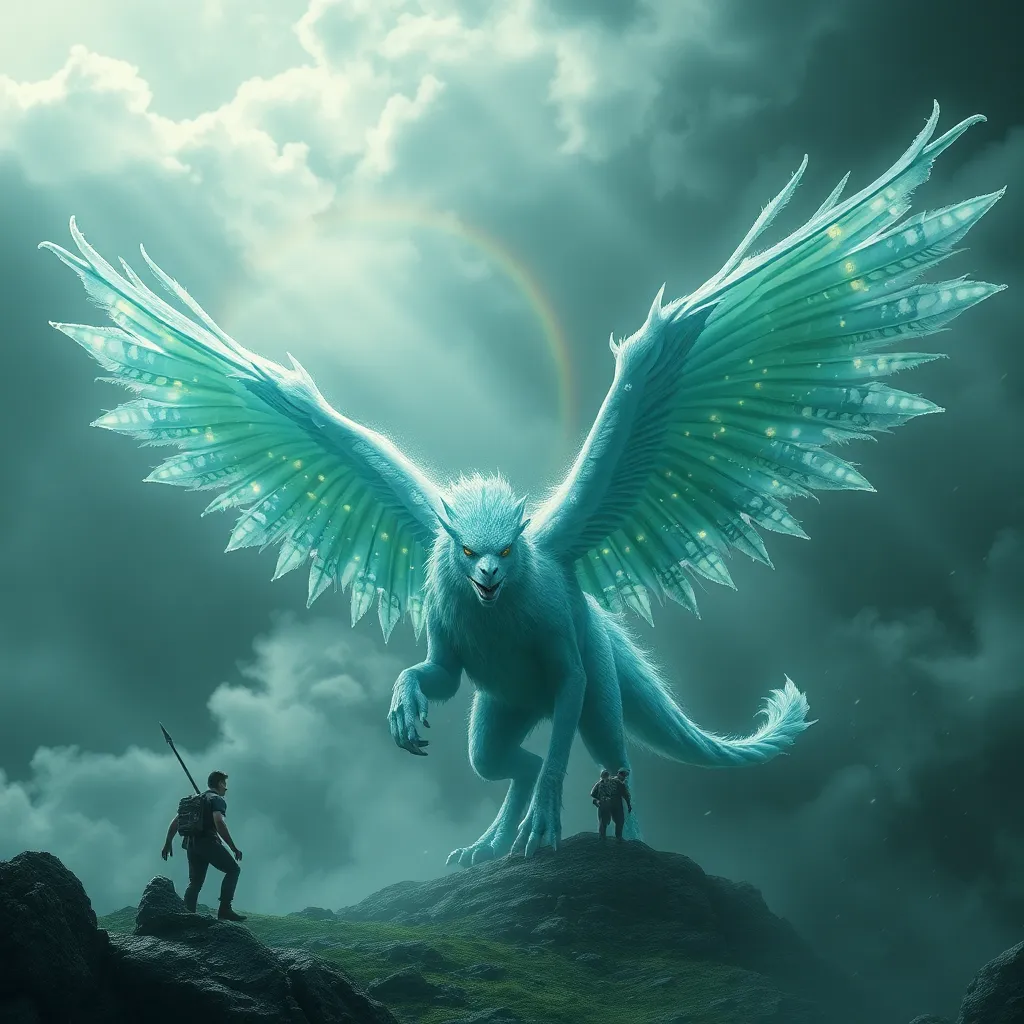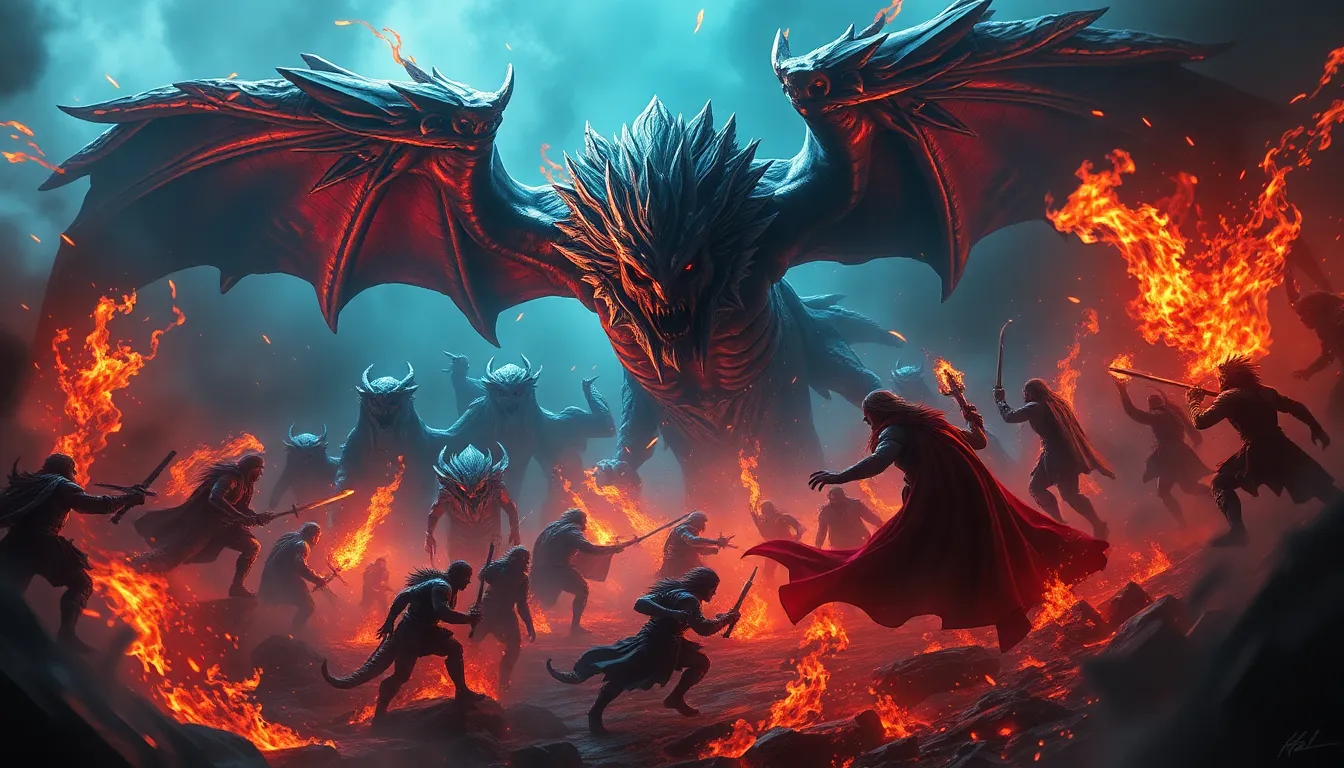Introduction: A Journey Through the Tapestry of Persian Mythology
The world of Persian mythology is a vibrant tapestry woven with tales of ancient heroes, mythical creatures, and profound symbolism. These stories have captivated hearts and minds for centuries, leaving an indelible mark on the cultural landscape of Persia and beyond.
In this article, we embark on a journey through the rich tapestry of Persian mythology, exploring its profound influence on symbolism in art. We will delve into the fascinating stories that have inspired generations of artists, unraveling the hidden meanings behind their creations.
From the eternal struggle between good and evil to the wisdom of the seven archangels, we will uncover the layers of symbolism embedded within these ancient tales. We will explore the mythical creatures that have come to embody various aspects of the human experience, including the Simurgh, a divine bird of transformation.
As we delve into the epic tales of the Shahnameh, we will witness the interplay between heroes, gods, and symbolism, and discover how these stories have shaped the cultural identity of Persia. Through these myths, we will gain insights into the Persian worldview, their understanding of life, death, and the human condition.
Furthermore, we will explore the symbolism of the Garden of Eden, a paradise lost and regained in the Persian mythos. We will examine the profound meaning behind the Simurgh's feather, a symbol of hope and guidance that has transcended generations.
By analyzing artistic representations of these myths, we will unveil the visual language through which these stories have been communicated across time. We will see how artists have used their craft to capture the essence of these ancient tales, imbuing their creations with profound meaning and symbolism.
Finally, we will examine the enduring impact of Persian mythology on the artistic and architectural traditions of Persia. From the magnificent palaces to the intricate carpets, we will witness the manifestation of these ancient myths in the realm of aesthetics.
Join us as we embark on this captivating exploration of Persian mythology, uncovering the profound meanings embedded within its stories and their profound influence on the artistic landscape of Persia.
6. The Garden of Eden: Paradise Lost and Paradise Regained
In Persian mythology, the Garden of Eden holds a unique place, signifying both paradise lost and the possibility of its restoration. As the primordial abode of humanity, it represents a state of innocence and harmony with nature. However, the transgression of Adam and Eve leads to their expulsion, symbolizing the fall of humanity from grace and the introduction of suffering into the world.
Despite this loss, the concept of paradise remains a potent symbol in Persian mythology, offering hope for redemption and a return to a state of bliss. The figure of the Simurgh, a mythical bird of transformation, embodies this aspiration. Through its guidance and wisdom, humanity can embark on a journey of self-discovery and ultimately achieve a spiritual reunion with the divine.
The Garden of Eden motif appears in various forms throughout Persian art and literature, often intertwined with Islamic theological concepts. Mystical poets, such as Rumi and Hafiz, use the imagery of the garden to express their longing for divine union and the transformative power of love. In Persian miniature paintings, the Garden of Eden is depicted as a lush oasis, filled with vibrant colors and symbolic elements that evoke a sense of wonder and longing.
7. The Simurgh's Feather: A Symbol of Hope and Guidance
The Simurgh, a majestic bird of mythical proportions, holds a profound significance in Persian mythology. It embodies the archetype of the divine guide, offering wisdom, protection, and the promise of transformation. The Simurgh's feather, a tangible representation of its presence, serves as a potent symbol of hope and guidance in the face of life's challenges.
In the epic poem "The Conference of the Birds," the Simurgh guides a flock of birds on a perilous journey to find their true selves. The feather becomes a beacon of hope, reminding the birds of their ultimate goal and the transformative power that awaits them. The arduous journey symbolizes the challenges faced by individuals seeking spiritual enlightenment, while the Simurgh represents the divine guidance that can lead them to their destination.
The Simurgh's feather also appears in numerous Persian folktales and parables, often serving as a tool for overcoming adversity and achieving personal growth. Its presence inspires courage, perseverance, and faith in the face of seemingly insurmountable obstacles. As a symbol of divine intervention, the feather embodies the belief that even in moments of despair, hope and guidance are always available to those who seek it.
8. Artistic Representation: The Visual Manifestation of Myths
Persian art has served as a canvas for the visual expression of mythical narratives and symbolism. Painters, calligraphers, and miniaturists have skillfully translated the essence of these stories into breathtaking works of art, capturing the imagination of generations.
In Persian miniatures, the intricate details and vibrant colors bring mythical creatures and legendary heroes to life. The Garden of Eden is depicted as a lush paradise, teeming with exotic plants and animals, while the Simurgh takes flight with its majestic wings spread wide. These visual representations not only evoke the wonder and beauty of these myths but also convey their deeper meanings and philosophical implications.
Calligraphy, the art of beautiful writing, played a significant role in transmitting Persian myths and legends. Skilled calligraphers adorned manuscripts with verses from the Shahnameh and other epic poems, preserving these narratives for posterity. The intricate patterns and elegant script not only enhanced the aesthetic appeal of these works but also served as a form of visual storytelling, carrying the weight of tradition and cultural heritage.
9. The Impact on Persian Art and Architecture
The influence of Persian mythology extends far beyond the realm of literature and art, shaping the architectural landscape and decorative motifs across the region. Palaces, mosques, and gardens were adorned with intricate designs and symbolic elements inspired by mythical tales.
The iconic dome of the Sheikh Lotfollah Mosque in Isfahan, for instance, is said to be modeled after the shape of a Simurgh's egg, symbolizing the potential for spiritual rebirth and transformation. The seven archangels often appear in decorative motifs on buildings, representing the guardians of the earthly realm and protectors of humanity. The mythical creatures of Persian mythology, such as dragons and griffins, adorned the walls of palaces and served as symbols of power and protection.
Through these architectural and decorative elements, Persian mythology became deeply embedded in the visual culture of the region, shaping the aesthetics and symbolism that continue to inspire artists and architects to this day.
10. Conclusion: A Legacy of Symbols, Stories, and Imagination
The profound influence of Persian mythology on symbolism in art reveals the enduring power of stories to shape our understanding of the world and ourselves. The rich tapestry of myths, legends, and symbolic creatures has provided artists with a wealth of inspiration, enabling them to translate profound concepts into visually captivating works of art.
Through these artistic expressions, Persian mythology continues to resonate with audiences across cultures and time periods, offering insights into the human condition, our aspirations, and our search for meaning. As we delve deeper into this world of imagination, we discover a legacy of symbols, stories, and a profound connection to the timeless human experience.
FAQ
- What are some examples of Persian myths that have been depicted in art?
The epic poem "The Shahnameh" serves as a treasure trove of stories that have inspired numerous artistic interpretations. The tale of Rostam and Sohrab, the tragic story of a father and son who unknowingly fight each other in battle, has been a popular subject for paintings and miniatures. The adventures of Zal, a legendary hero born with white hair, and the love story of Layla and Majnun have also been immortalized in art.
- How has Persian mythology influenced Western art?
The influence of Persian mythology on Western art can be traced back to the Middle Ages, when European travelers and scholars brought back stories and motifs from the East. These influences can be seen in works by artists such as William Blake, Dante Gabriel Rossetti, and Edward Burne-Jones, who drew inspiration from Persian legends and incorporated them into their own artistic creations.
- Where can I learn more about Persian mythology?
Numerous resources are available for exploring the rich world of Persian mythology. The epic poem "The Shahnameh" by Ferdowsi is a primary source of these stories. Additionally, books by scholars such as John Perry, Maria Macuch, and Ahmad Tafazzoli provide in-depth analyses of Persian mythology and its cultural significance. Online resources, such as the website of the British Museum, also offer valuable insights into this fascinating subject.



